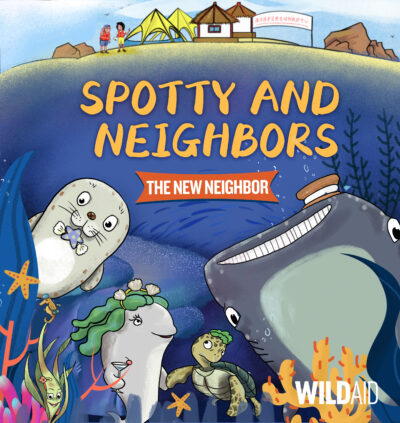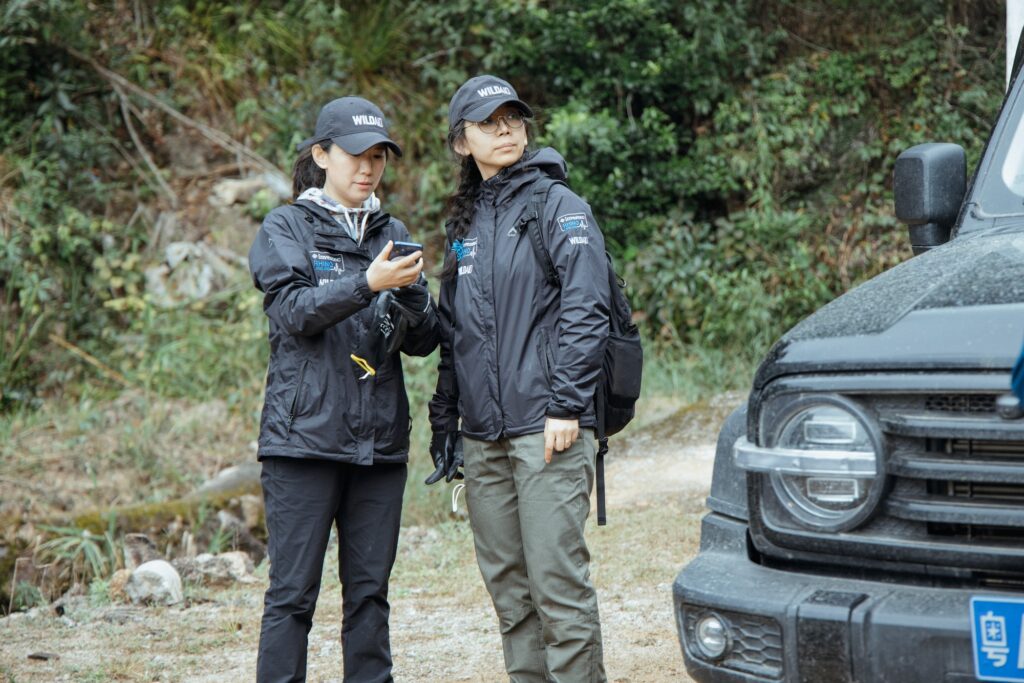
Inspiring people to take action for conservation requires innovative strategies for connection. This year, we employed a new avenue to inspire the public to take action for marine wildlife in China: a comic book. Spotty and Neighbors centers around the adventures of three spotted seals, intertwining humorous narratives with essential conservation messages.
The comic series released four episodes in 2023, touching on topics like poaching, water pollution, overfishing, and the importance of Marine Protected Areas (MPAs). Due to its popularity, we are extending the comic for an extra episode in early spring 2024.
Spotty and Neighbors received support from prominent partners National Geographic KIDS magazine and Guomai Culture (one of China’s largest publishers), who shared our comics on their social channels. As of last month, the episodes received over 4.4 million views and positive public feedback. Followers expressed their love for the characters and their improved awareness and education of marine conservation.
We asked Leah Tian, our Strategic Communications Manager at our Beijing office, why spotted seals and what inspires her to employ different mediums to get WildAid’s conservation messages to a massive audience.
What’s the status of spotted seals in China? Why are they the focus of this campaign?
According to 2021 statistics, there are approximately 2,000 spotted seals inhabiting the Western Pacific region within Chinese waters. They are the only seal species naturally breeding in China and are classified as a national first-level protected wildlife species.
Liaodong Bay and Changdao—key spotted seal habitats—have established MPAs. However, the general public in China has little knowledge about MPAs, especially residents in non-coastal regions. According to a 2023 public survey released by WildAid and First Institute of Oceanography, Ministry of Natural Resources (FIO), at least half of the respondents were unaware of the function of MPAs.
Therefore, WildAid has selected the charming spotted seal as a flagship species of China’s oceans, to draw public attention to the importance of well-managed and enforced MPAs for protecting spotted seals and other marine life.


How do you determine when to use a new communications strategy like this comic?
We usually start by identifying the audience we will be speaking to. We design our core message and communication channels based on the demographics and interests of our target audience.
How do you know what strategy will work for your target audience?
We base our decisions on social surveys, audience feedback, and personal observations. These fundamental tools help us narrow our options and rule out strategies that stray from our objective and target audience. The success of our strategy does not rely solely on the form of the communication materials, but also on the promotional partners we can onboard. The involvement of partners in helping to promote our material will increase circulation, enhance accessibility, and reach a broader audience.


What made you decide on a comic book for marine conservation?
This campaign targets young people and families with children, as they are more likely to visit beaches and areas where MPAs are located. Comics were chosen as the medium because they are light, fun, and a preferred format on social media for these audiences. The aim is for readers to learn about what’s inside MPAs, how MPAs protect these creatures, and the dos and don’ts within MPAs.
What has been your favorite non-traditional communication material (PSA, billboard, etc.) campaign?
My favorite is a comic strip we’ve done in the past that talks about both pangolin conservation and climate change. I believe comics are excellent for conveying a range of educational content in a light and engaging way, making it easier and more creative to grasp the core message.
What other media do you feel could be fun to explore to discuss conservation?
Offline events and immersive interactive exhibitions are powerful tools to communicate conservation messages. These formats enable direct and tangible interaction with the audience. Attendees are fully engaged with the provided information and not as distracted by their surroundings, allowing them time to process the messages, which may result in a more memorable and long-term impact on their perceptions. Additionally, these events incentivize attendees to share photos and experiences on social media, thereby generating more buzz and awareness about our conservation message.
Regarding digital strategies, using mini-games or engaging experiences like picture filters, TikTok duets (where users create content alongside another user’s video), and blind box draws (where users participate in a virtual mystery box experience with a chance of winning something unexpected) are all popular, engaging, and effective methods we use. The aim is to blend conservation content with experiential forms of entertainment, making it easier for people to understand our topic.
Check out the Spotty and Neighbors comics here:
Episode 1
Episode 2
Episode 3
Episode 4
Episode 5
Stay in touch and get the latest WildAid updates.
SIGN UP